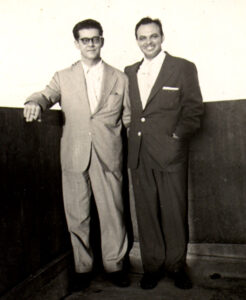- The guitarist and composer Laurindo Almeida was born in Miracatu (SP), to whom Radamés dedicates several works, including the Concerto nº 4 para violão e orquestra [1], de 1967.
Radamés and Laurindo, in the 1940s.
- In February, the Original Dixieland Jazz Band (ODJB) makes its first recording in the United States; is the first album recorded by a jazz group.
- Casa Edison, from Rio de Janeiro, Brazil’s first record label, launches the controversial samba Pelo Telephone[2], recorded by Donga (Ernesto Joaquim Maria dos Santos, 1890-1974), recorded by the singer Baiano[3]. Samba is structured as a genre, still heavily rooted in the syncopated rhythmic cells of maxixe.
- Workers’ strike in São Paulo, promoted by anarchists. This movement was the first major labor demonstration in Brazil and spread to several cities, such as Curitiba and Rio de Janeiro.
- Decisive year for the First World War: the United States officially enters the conflict. Russia withdraws to make its own revolution. Lenin takes power and announces the victory of the Russian Revolution.







